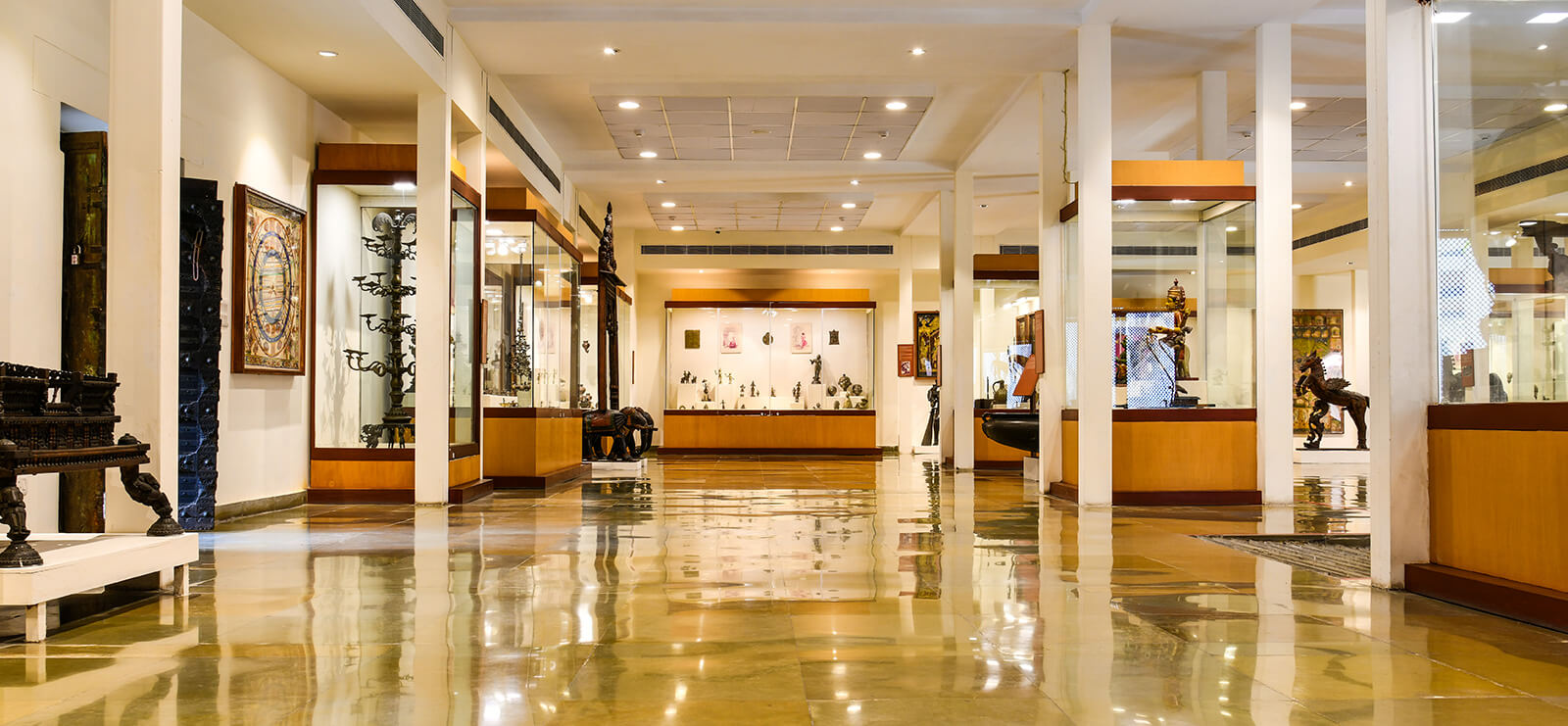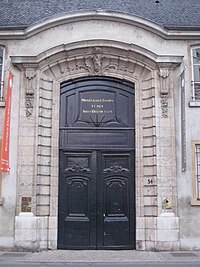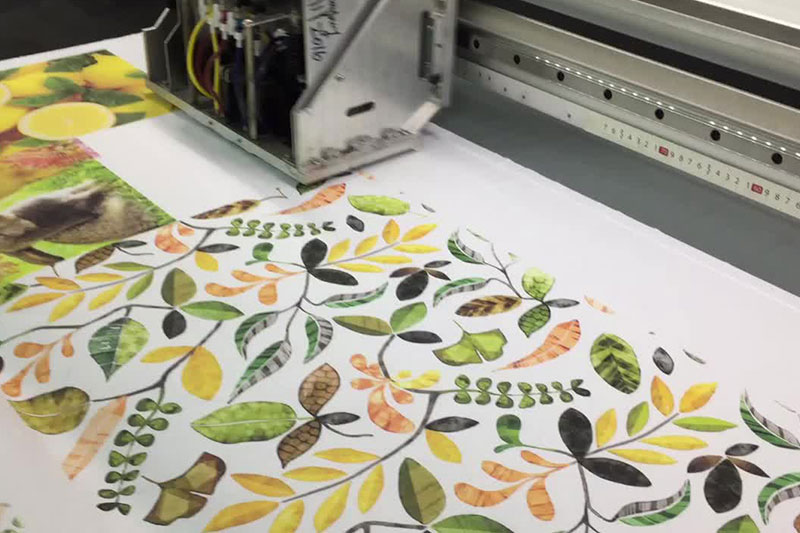Textile Museums Around World

Textiles Museums Around World
The rich history of textiles can be read anywhere but to actually get to see them is an experience you don’t want to miss out on. It’s a true blessing to have museums where the long lost and forgotten items are preserved to be remembered forever. We love clothes and outfits and we love designing and trying on the newest trends but not all of them are equally appealing, some are good but some are just so great that they go down in history as a symbol of greatness and hard work. And to make it easier for you to witness and get inspired by it, we have museums, a place where the present meets the past (no hard feelings). So allow me to take you on this journey of finding famous textile museums from all over the world.

1.National Crafts Museum and Hastakala Academy, New Delhi, India
The National Handicrafts and Handlooms Museums (NHHM) commonly known as National Crafts Museum in New Delhi is one of the largest crafts museums in India. It is run by the Ministry of Textiles, Government of India. The museum is situated on the corner of the Pragati Maidan, facing the Purana Quila complex. In 2015, the Government of India announced that a Hastkala (handicrafts) Academy would be established in the museum premises, converting some galleries into classrooms. Initial renovations destroyed one of the museum’s most well-known artifacts, a room of murals painted by Madhubani artist Ganga Devi, leading to widespread criticism.
The crafts museum established in 1956 by the now defunct All India Handicrafts Board, was the vision of Kamaladevi Chattopadhyay to preserve traditional arts and crafts. Over 30 years, it grew into a space where craftsmen from across India worked. By the 1990s, it had a substantial collection. Today, it houses over 35000 rare pieces, including paintings,textiles, crafts of clay, stone and wood. The building, designed by architect Charles Correa between 1975 and 1990, blends traditional and modern architecture.

2.National Silk Museum, China
The China National Silk Museum, is a national-level museum in Hangzhou, Zhejiang province, China. It is the world’s largest silk museum, opened in 1992 and renovated in 2015-2016. It focuses on researching and preserving Chinese textile artifacts. It houses permanent exhibitions like “The Story of Chinese Silk” and hosts visiting scholars. The museum also holds the annual Chinese Costume Festival, known as the Hanfu Festival, featuring different dynasty themes since 2018.

3.George Washington University Museum, Washington DC, USA
Located on GW’s campus in downtown Washington D.C. The museum celebrates the creative achievements of people around the world. The galleries are open to the public Tuesday to Saturday from 10 to 5. You can also visit the museum virtually.
4.Museum for Textiles, Toronto, Canada
The textile museum of Canada, located in Toronto, Ontario, Canada, is a museum dedicated to the collection, exhibition , and documentation of textiles.
The museum was founded as the Canadian Museum of Carpets and Textiles in 1975 by Max Allen and Simon Waegmaekers. Located above an ice cream shop in Mirvish Village, the museum’s collection was initially based on textiles collected during business trips. The museum relocated to its current location in 1989.

5.Textile collections at Los Angeles County Museum of Art, USA
The Los Angeles County Museum of Art (LACMA) is an art museum located on Wilshire Boulevard in the Miracle Mile Vicinity of Los Angeles. LACMA is on Museum Row, adjacent to the La Brea Tar Pits.
The museum was founded in 1961, splitting from the Los Angeles Museum of History, Science and Art. Four years later, it moved to the Wilshire Boulevard complex designed by William Pereira. The museum’s wealth and collections grew in the 1980s, and it added several buildings beginning in that decade and continuing in subsequent decades.
It is the largest art museum in the western United States. It attracts nearly a million visitors annually.

6.Yokohama Silk Museum, Japan
The Yokohama Silk Museum is a museum located in Naka-ku, Yokohama, Japan that covers the silk trade in Japan. The museum displays silk kimonos and covers the importance of Yokohama as a silk port.

7.National Textile Museum, Kuala Lumpur, Malaysia
The national textile museum is a museum in Kuala Lumpur, Malaysia. The museum is open daily from 9 am to 6pm.
Designed by Arthur Benison Hubback in an Indo-Saracenic Revival architecture, the building was originally completed in 1905 to house the headquarters for the Federated Malay States Railways (FMSR now KTM). After the FMSR moved to the Railway Administration Building in 1917, the building was handed to the Selangor Public Works Department and has subsequently housed various government and commercial occupants including the Selangor Water Department, Malaysian Craft and the High Court, before being converted for use as the National Textile Museum and opened to the public on 9th january 2010. The building is officially designated as JKR Building 26. It was gazetted as a historical building in 1983.

8.Cooper Hewitt, Smithsonian Design Museum, New York City, USA
Cooper Hewitt, Smithsonian Design Museum is a design museum housed within the Andrew Carnegie Mansion in Manhattan, New York City, along the Upper East Side’s Museum Mile. The collections consist of decorative and design objects. Museum boasts an impressive collection of textiles spanning various cultures, periods, and styles. From ancient to contemporary pieces, the textiles on display showcase the evolution of design, craftsmanship, and cultural significance. Visitors can explore intricate tapestries, delicate embroideries, vibrant textiles from different regions, and innovative fabric technologies. The museum provides insights into the role of textiles in society, art, fashion, and technology, offering a rich tapestry of inspiration.
Although the museum is not free to the public and charges an admission fee to the visitors, I bet it’s worth every penny.

9.San Jose Museum of Quilts and Textiles, California USA
The San Jose Museum of Quilts and Textiles is an art museum in Downtown San Jose, California, USA. Founded in 1977, the museum is the first in the United States devoted solely to quilts and textiles as an art form. The holdings include a permanent collection of over 1000 quilts, garments and ethnic textiles, emphasizing artists of the 20th century, and a research library with over 500 books concerning the history and techniques of the craft.
The museum had its beginnings as the American Museum of Quilts and Related Arts, founded in Los Altos, California by the Santa Clara Valley Quilt Association in 1977. It was incorporated in 1986 as a nonprofit public benefit museum, managed by a board of trustees. It relocated several times until it moved into its 13,000 square feet(1,200 meters) permanent home in San Jose’s SoFA(South First Area) Arts District in 2005.

10.Southwestern Quilt and Textile Museum, Georgia, India
The Southwestern Quilt and Textile Museum (SQTM), IS A not-profit organization dedicated to education and presentation of quilts and textiles. The SQTM collects, exhibits, preserves, promotes and interprets the heritage , art and production of quilting and textiles in the southwestern United States. Since 1998, people from the Georgia Quilt Project and the Georgia Quilt Council worked hard to make a quilt and textile museum in the southeast. In 2009 they chose Carrollton, Georgia as the place for the museum, which later became the SouthwesterN Quilt and Textile Museum (SQTM).

11.National Textile Museum, Bhutan
The museum features a stunning display of ancient and modern textiles, and explores the rich traditions of Bhutan’s national arts of weaving and embroidery. The ground floor focuses on royal ghos, including the wedding clothes worn by the fourth king and his 4 wives. The upper floor introduces the major weaving techniques, styles of local dress and types of textiles made by women and men. The museum also has a shop that offers interesting books and fine textiles. Just across the courtyard lies the Royal Textile Academy conservation center, where visitors can observe a small group of weavers at their looms.

12.Textile Museum of Decorative Arts (Le musée des Tissus et des Arts Décoratif) Lyons, France
The Textile Arts Museum (Musee des Tissus) is a museum in the city of Lyon, France. Located in two 18th century hotels particuliers of Lyon’s 2nd arrondissement, the institution consists in two distinct collections: the textile collection and the decorative arts collection. The museum was founded in 1864, and its a place where you can find a huge collection of textiles from around the world. They have about 2.5 million items. These textiles come from different times, spanning 4000 years from ancient times to today. You can see various techniques and items from all around the world. The museum also has a lot of stuff related to Lyon’s silk industry, showing its history really well. Apart from textiles, the museum also has a collection of decorative arts. This includes things like furniture, pottery, drawings, paintings, sculptures, and more.

13.Textile Museum in Blondus, Iceland
The textile Museum in Blonduos exhibits a special collection of homemade wool and textile items. It also showcases stunning Icelandic traditional costumes and artistic embroideries, along with the tools and equipment used to make them. Its the only museum of its kind in Iceland and was started by the Women’s Union in east Hunavatnssysla The museum officially opened in 1976 during Blonduos centennial and became a private foundation in 1933. Now, it’s housed in a lovely new building, making it easy for the explorers to visit the exhibitions.

14.Museum of Textile St. Gallen, Switzerland
Established in 1878, the Textile Museum of St. Gallen is home to one of Switzerland’s most significant textile collections. It features woven fabrics and embroideries from all over the world. Many famous fashion designers, like Akris, Chanel, Dior, Armani, Givenchy, Lacroix, and Yves Saint Laurent, use their embroidered fabrics in their creations. St. Gallen is known for its lace and embroidery, so it wouldn’t be complete without a textile museum.

15.All Russian Museum of Decorative, Applied and Folk Art, Moscow, Russia
The All-Russian Museum of Decorative, Applied and Folk Art in Moscow, Russia is indeed a treasure trove for textile enthusiasts, with its stunning displays of special weaves and culturally significant silks from Russia. It’s definitely a must-visit for anyone passionate about textile art and cultural heritage.

16.Egyptian Textile Museum, Cairo, Egypt
The Egyptian Textile Museum in Cairo, Egypt, is renowned for its extensive collection of ancient textiles, showcasing the rich history and craftsmanship of Egyptian weaving and embroidery traditions. The museum provides visitors with a fascinating insight into the cultural and artistic significance of textiles in ancient Egypt and serves as a valuable resource for anyone interested in learning about the ancient textile traditions of Egypt, offering a glimpse into the artistic achievement and technological advancements of this ancient civilization.
More News
How to Identify Authentic Indian Handloom Products?
Indian handloom products are a timeless testament to the country’s rich cultural heritage and craftsmanship. From luxurious Banarasi silks to timeless Khadi…View More
How to Start a Garment Manufacturing Business in India?
India’s textile and garment industry has always been a major contributor to the country’s economy, offering vast opportunities for entrepreneurs. With the…View More
How to Reduce Textile Waste in Garment Production?
Textile waste has become a growing concern in the garment industry, with significant environmental and economic impacts. As businesses and consumers become…View More
The Digital Transformation of Textile Production
The shift from traditional textile printing to digital fabric printing has unlocked a world of new possibilities for producers and designers alike.…View More
Recap of India’s Garment Industry in 2024: A Year of Growth and Transformation
As 2025 begins, India’s garment industry has experienced significant growth, overcoming challenges and embracing new opportunities in 2024. From technological advancements to…View More
Download
Register Now
Recent Posts
Show Countdown
DELHI
Bharat Mandapam (Pragati Maidan), New Delhi, India
- days
- Hours
- Minutes
- Seconds
MUMBAI
Jio World Convention Centre, Bandra Kurla Complex, Mumbai







